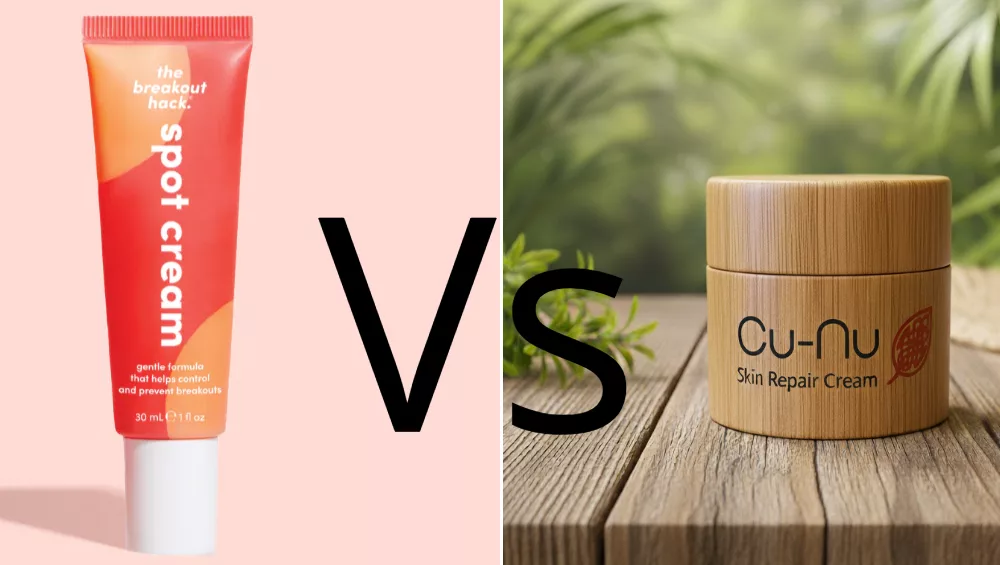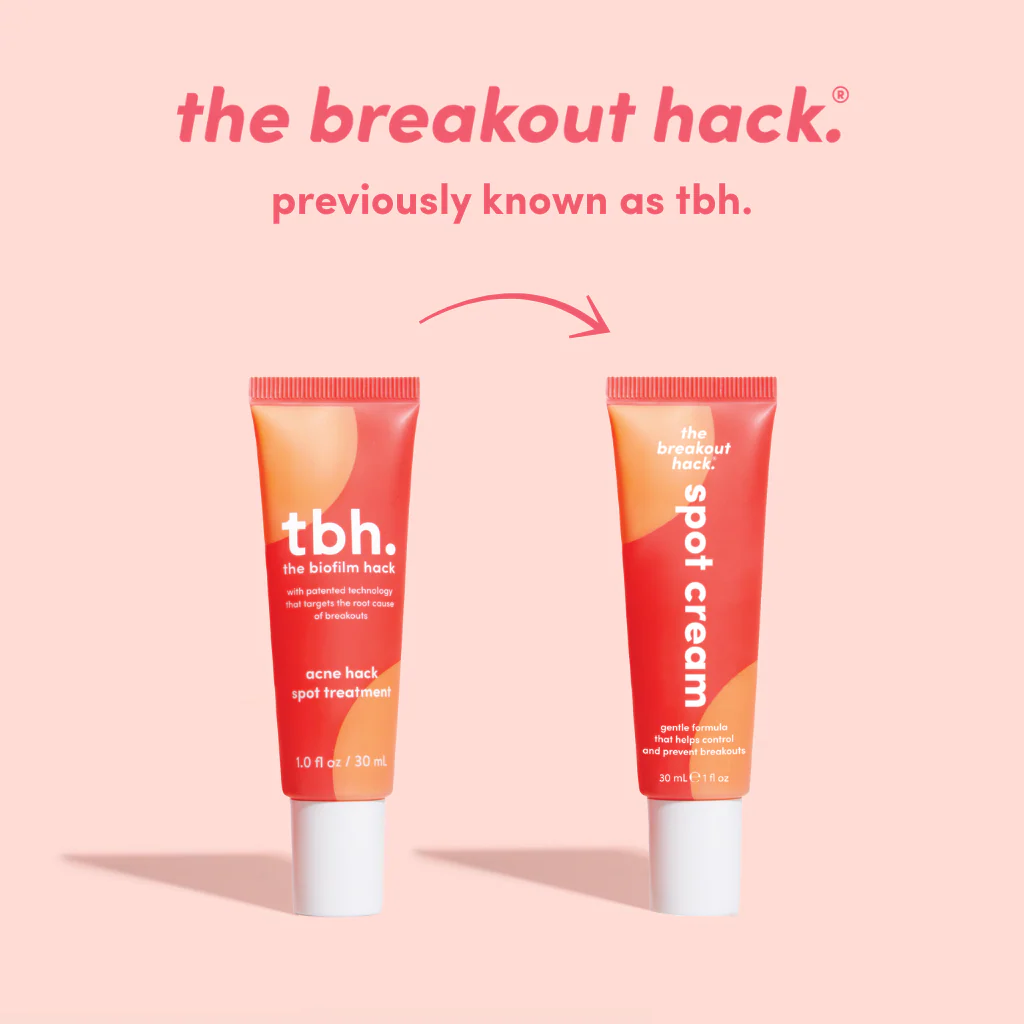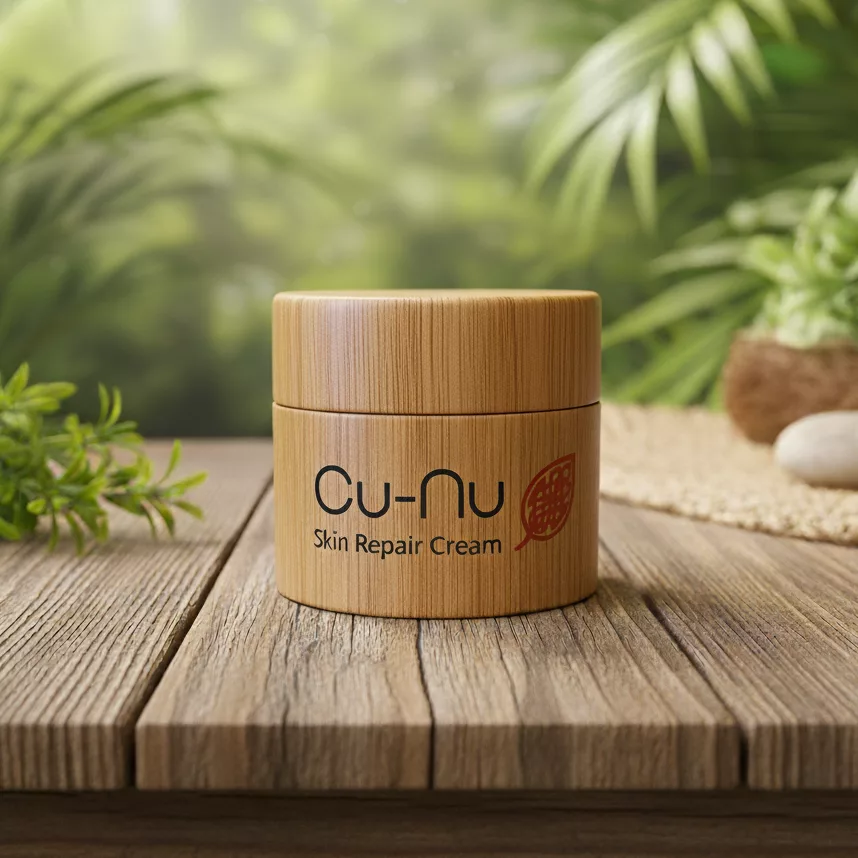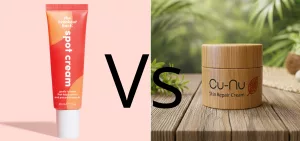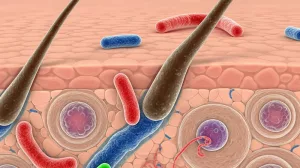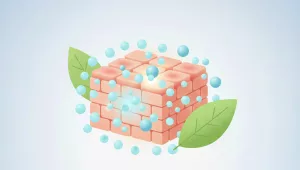Acne can feel like an unwelcome guest that overstays its welcome, disrupting your confidence and glow. Whether you’re a teen battling hormonal breakouts or an adult facing stubborn spots, finding the right solution is key. Enter two standout players: TBH Skincare and Cu-Nu Skin Repair. Both are game-changers for acne-prone skin, but they tackle the issue from different angles—one offers rapid relief for those pesky pimples, while the other digs deep to address root causes for long-term health. Let’s break down their differences, celebrate TBH’s impressive quick wins, and explore how Cu-Nu builds a foundation for resilient, glowing skin. Plus, we’ll dive into their ingredient differences to see what sets them apart.
What’s great about TBH Skincare
The Spot Cream’s magic lies in its gentle yet potent formula, powered by patented technology. Key ingredients include:
- Isopropyl Alcohol: An antimicrobial agent that targets acne-causing bacteria.
- Glycerin and Olive Oil Derivatives (like Olea Europaea Fruit Oil and Ethylhexyl Olivate): Hydrators that prevent the drying effect of alcohol.
- Dimethicone: Forms a protective barrier to lock in moisture.
- Benzalkonium Chloride: Adds preservation and boosts efficacy.
- Cetearyl Olivate and Sorbitan Olivate: Emulsifiers that ensure a smooth, non-irritating texture.
The application is simple: after cleansing, apply to active pimples, wait 5 minutes for absorption, then layer on serums or moisturizers. It’s meant for once-daily use, ideally at night. A 6-week study of 127 Australian users showed impressive results: 90% found it gentle, 78% said it effectively controls breakouts, 69% noted fewer breakouts overall, and 84% saw visibly clearer skin. Reviews rave about its speed—users like Sarah K. report reduced inflammation overnight, while Georgia M. praises its ability to clear pimples in days without drying skin. “This is so brilliant,” says Emma W., who jokingly fears it’ll “put itself out of business” because it works so well.
TBH is a superstar for immediate relief, calming redness and zapping spots fast. It’s perfect for hormonal acne flare-ups or sudden congestion, with fans calling it a “miracle” for its quick, drama-free results. However, its focus is on symptom management—tackling surface-level issues like clogged pores and inflammation. While it prevents escalation of active breakouts, it doesn’t address deeper causes like microbiome imbalances or weakened skin barriers, meaning you might need to reapply it for recurring issues.
Cu-Nu Skin Repair: Building a Foundation for Healthy Skin
Cu-Nu Skin Repair, a Belfast-based brand, takes a holistic, long-term approach, repairing acne at its core rather than masking it. Their Face and Body Skin Repair Cream uses clean, potent ingredients to nurture and rebuild, emphasising cellular healing over quick fixes.
Why Cu-Nu Stands Out
Cu-Nu’s formula is preservative-free, freshly made, and centered on innovative ingredients:
- GHK-Cu (Copper Tripeptide-1): A powerhouse peptide that stimulates collagen, reduces inflammation, promotes tissue repair, and acts as an antioxidant.
- Inulin (Prebiotic): Balances the skin’s microbiome, the ecosystem often disrupted in acne-prone skin, to prevent future breakouts.
- Natural Emollients and Botanicals: Soothe sensitive areas and fortify the skin barrier without clogging pores.
Apply daily to affected areas (or full face/body) for cumulative benefits. It calms chronic inflammation, heals scars, and strengthens defences, reducing breakout frequency and severity over time. Users report smoother texture, faded scars, and a glowing complexion that withstands stress, hormones, and environmental triggers. Unlike spot treatments, Cu-Nu isn’t about overnight miracles—it’s about investing in a stronger foundation, turning reactive skin into a thriving canvas.
Ingredient Showdown: Surface Action vs. Deep Repair
The core difference lies in ingredients and approach. TBH’s Spot Cream is built for speed, using antimicrobial agents like Isopropyl Alcohol and Benzalkonium Chloride to kill bacteria and clear congestion fast. Hydrators like Glycerin and olive oil derivatives (e.g., Olea Europaea Fruit Oil, Ethylhexyl Olivate) ensure it’s gentle, while preservatives and emulsifiers (e.g., Glyceryl Stearate, PEG-100 Stearate) maintain stability but don’t contribute to long-term health.
Cu-Nu skips preservatives and alcohol, focusing on bioactive ingredients like GHK-Cu and Inulin. These repair damage, boost collagen, and restore microbiome balance—elements absent in TBH’s lineup. While TBH’s ingredients excel at immediate clarity, Cu-Nu’s invest in prevention and resilience, addressing why breakouts happen.
| Aspect | TBH Spot Cream | Cu-Nu Skin Repair Cream |
|---|---|---|
| Primary Focus | Surface-level breakout control & prevention | Deep repair of root causes & barrier strengthening |
| Key Ingredients | Isopropyl Alcohol, Glycerin, Benzalkonium Chloride, Olive Oil derivatives, Dimethicone | GHK-Cu (copper peptide), Inulin (prebiotic), natural emollients |
| Results Timeline | Fast (overnight reduction, clearer in days/weeks) – temporary relief | Gradual (improved resilience in weeks/months) – long-term health |
| Best For | Sensitive skin with active pimples | Chronic acne, scarring, future-proofing |
| Texture/Use | Lightweight spot treatment, once daily | Nourishing cream, daily full-face/body application |
| Potential Drawback | May need repeated use for ongoing issues | Slower initial visible changes |
The Verdict: Band-Aid Bliss or Future-Proof Glow?
TBH Skincare and Cu-Nu Skin Repair both deserve a spot in your routine. TBH’s Spot Cream is your clutch player for bad breakout days—its lightweight, fast-acting formula delivers clear, calm skin in days, earning raves for gentle efficacy. It’s the espresso shot for when you need to feel unstoppable, stat. But its temporary nature means it’s not a one-and-done fix for recurring acne.
Cu-Nu is the nourishing smoothie that builds your skin’s future. By tackling root causes with copper peptides and prebiotics, it creates a strong, balanced canvas that resists breakouts long-term. It’s slower but transformative, perfect for breaking the acne cycle.

